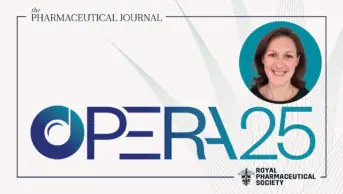Report on the Role of Pharmacy Professionals in Advancing Health Equity and Sustainable Development Goals
Aligning Pharmaceutical Public Health with Global Goals
The role of pharmacy professionals is evolving to become integral in the mission to reduce health inequalities, directly supporting the achievement of the United Nations Sustainable Development Goals (SDGs). An updated vision for pharmaceutical public health positions the reduction of health disparities as a core priority. This strategic shift aligns with key global targets:
- SDG 3: Good Health and Well-being: By improving equity in healthcare access, patient experience, and outcomes, the pharmacy profession contributes to ensuring healthy lives and promoting well-being for all at all ages.
- SDG 10: Reduced Inequalities: As accessible healthcare providers, pharmacists are uniquely positioned to identify and mitigate inequities, addressing the social and structural determinants of health for marginalized communities.
- SDG 17: Partnerships for the Goals: Tackling entrenched health inequalities requires multi-sectoral collaboration, and pharmacy professionals are now recognized as critical partners alongside public health teams and policymakers.
This updated approach calls for more inclusive service design, equitable prescribing practices, and culturally competent care, reflecting a commitment to universal health coverage (SDG 3.8) and social inclusion (SDG 10.2).
Strategic Frameworks for Tackling Health Disparities
The NHS Core20PLUS5 framework provides a national strategy for reducing healthcare inequalities, which operationalizes the principles of the SDGs at a system level. The framework focuses action on specific populations and clinical areas to accelerate improvement.
Components of the Core20PLUS5 Framework:
- Core20: Targets the most deprived 20% of the national population, directly addressing the mandate of SDG 10 to empower and promote the inclusion of all, irrespective of economic status.
- PLUS: Focuses on inclusion health groups who face significant social exclusion, such as individuals experiencing homelessness, drug and alcohol dependence, and vulnerable migrants. This aligns with the “leave no one behind” principle of the 2030 Agenda for Sustainable Development.
- FIVE: Identifies five clinical areas for accelerated improvement.
- For adults: maternity, severe mental illness, chronic respiratory disease, cancer, and cardiovascular disease.
- For children and young people: asthma, diabetes, epilepsy, oral health, and mental health.
Recent studies in pharmacy practice demonstrate how the profession is already contributing to the aims of this framework and, by extension, the SDGs.
Addressing Key Health Challenges and Supporting SDG 3 Targets
Mental Health: Realizing Unmet Potential
Pharmacists’ involvement in mental health care is crucial for advancing SDG 3.4, which aims to promote mental health and well-being. However, their full potential is constrained by several barriers:
- Public misconceptions regarding the pharmacist’s role in mental health.
- Insufficient training and systemic support for pharmacists.
- Role ambiguity within primary care teams.
- Difficulties engaging patients who lack digital access or trust in the healthcare system.
Studies indicate that while patients see potential for pharmacists in roles such as counselling, triage, and education, a coordinated effort is needed to co-produce a model of care that integrates pharmacists effectively into mental health support systems.
Non-Communicable Diseases (NCDs): Cancer, Cardiovascular Health, and Frailty
Pharmacy-led initiatives are making significant contributions to managing NCDs, a key target of SDG 3.4.
- Cancer Care: An audit of chemotherapy prescribing standards demonstrated high compliance, underscoring the vital role of pharmacists in ensuring the safety and consistency of anti-cancer therapy. This quality assurance is fundamental to reducing disparities in cancer outcomes.
- Cardiovascular Health: Research has revealed inequities in cardiovascular care, with a study showing that prescribers were less likely to adhere to antihypertensive guidelines for female patients. This finding highlights a direct challenge to SDG 5 (Gender Equality) and SDG 10 (Reduced Inequalities). Pharmacists can drive improvement through screening, medicines optimisation, and adherence audits.
- Care for Frail Older Adults: The DEFERAL study demonstrated the feasibility of a multidisciplinary deprescribing approach to reduce potentially inappropriate medications in frail older adults. This person-centred approach promotes rational prescribing and supports healthy aging, in line with the objectives of SDG 3.
Recommendations for Systemic Improvement and Future Action
To fully harness the potential of the pharmacy profession in tackling health inequalities and advancing the SDGs, a strategic approach is required. Recommendations from UK-wide evidence on pharmaceutical public health include:
- Adopting a national strategic approach to pharmaceutical public health.
- Improving the commissioning of public health services from pharmacies.
- Formalising workforce development for pharmaceutical public health roles.
- Promoting evidence-based research and development in the field.
These actions are essential for strengthening health systems and building the partnerships (SDG 17) needed to achieve good health and reduce inequalities for all.
1. Which SDGs are addressed or connected to the issues highlighted in the article?
The article primarily addresses issues related to two Sustainable Development Goals (SDGs):
- SDG 3: Good Health and Well-being: The article’s central theme is improving health outcomes and tackling health inequalities through the pharmacy profession. It discusses specific health conditions like mental illness, cancer, and cardiovascular disease, and focuses on promoting health, preventing disease, and ensuring access to quality healthcare services and medicines.
- SDG 10: Reduced Inequalities: The article is explicitly about “tackling entrenched health inequalities.” It highlights the need to address disparities in healthcare access, experience, and outcomes for vulnerable and marginalized populations, as defined by the NHS ‘Core20PLUS5’ framework. This framework targets the most deprived 20% of the population and inclusion health groups, directly aligning with the goal of reducing inequalities.
2. What specific targets under those SDGs can be identified based on the article’s content?
SDG 3: Good Health and Well-being
-
Target 3.4: By 2030, reduce by one-third premature mortality from non-communicable diseases through prevention and treatment and promote mental health and well-being.
- Explanation: The article directly addresses this target by focusing on the role of pharmacy in managing several of the “five focus clinical areas” from the Core20PLUS5 framework, which include non-communicable diseases like “chronic respiratory disease, cancer diagnosis and cardiovascular disease” and the promotion of mental health. It discusses pharmacy-led work in early cancer diagnosis, hypertension case-finding, and supporting individuals with severe mental illness.
-
Target 3.5: Strengthen the prevention and treatment of substance abuse, including narcotic drug abuse and harmful use of alcohol.
- Explanation: The article identifies “drug and alcohol dependence” as a key issue for “inclusion health groups (PLUS)” that require targeted action to reduce healthcare inequalities. This shows a direct connection to strengthening treatment for substance abuse within these vulnerable communities.
-
Target 3.8: Achieve universal health coverage, including financial risk protection, access to quality essential health-care services and access to safe, effective, quality and affordable essential medicines and vaccines for all.
- Explanation: The core mission described in the article is to improve “equity in access, experience and outcomes of care.” It emphasizes that pharmacy professionals are “uniquely positioned to identify, mitigate and address healthcare inequities” due to their accessibility. The discussion on medicines optimisation, ensuring adherence to prescribing standards for chemotherapy, and providing medication counselling all contribute to achieving access to quality healthcare services and medicines for all, especially the most deprived.
SDG 10: Reduced Inequalities
-
Target 10.2: By 2030, empower and promote the social, economic and political inclusion of all, irrespective of age, sex, disability, race, ethnicity, origin, religion or economic or other status.
- Explanation: The article’s focus on the NHS ‘Core20PLUS5’ framework is a direct application of this target. The framework specifically targets the “most deprived 20% of the population (Core20)” and “inclusion health groups (PLUS),” which include people experiencing homelessness, vulnerable migrants, and Gypsy, Roma, and Traveller communities, among others. The goal is to ensure these socially excluded groups are not left behind in healthcare.
-
Target 10.3: Ensure equal opportunity and reduce inequalities of outcome, including by eliminating discriminatory policies and practices.
- Explanation: The article highlights existing inequalities of outcome and calls for action to remedy them. For example, it cites a study that revealed inequities in cardiovascular care, where prescribers were “less likely to adhere to guidelines in female patients ≥55 years.” By calling for “equitable prescribing, data-informed outreach and culturally competent care,” the article advocates for practices that ensure equal opportunity for good health outcomes.
3. Are there any indicators mentioned or implied in the article that can be used to measure progress towards the identified targets?
Indicators for SDG 3 Targets
-
For Target 3.4 (NCDs and Mental Health):
- Adherence to prescribing standards: The article mentions an audit in an Irish hospital that “assessed adherence to chemotherapy prescribing standards and found high levels of compliance.” This rate of compliance serves as a direct indicator of quality and safety in cancer care.
- Adherence to treatment guidelines: A cross-sectional study revealed that “prescriber adherence to antihypertensive prescription guidelines” varied by gender and age. Tracking this adherence rate, especially across different demographic groups, is an indicator of the quality and equity of cardiovascular care.
- Consumer awareness of mental health services: A study found that a “significant proportion [of the public] were unaware of available services or the pharmacist’s training” in mental health. Measuring the level of public awareness can be an indicator of progress in integrating pharmacy into mental health promotion.
-
For Target 3.8 (Universal Health Coverage):
- Access to and engagement with healthcare services: The article implies the need to measure engagement with pharmacy services by hard-to-reach groups. It notes the “difficulty engaging patients who lacked digital access or trust in the system,” suggesting that tracking engagement rates among these populations is a key indicator of equitable access.
Indicators for SDG 10 Targets
-
For Target 10.3 (Equal Opportunity and Outcomes):
- Disparities in guideline adherence by demographic group: The finding that prescribers were “less likely to adhere to guidelines in female patients ≥55 years” is a specific, measurable indicator of an inequality of outcome. Reducing this disparity would show progress towards the target.
- Healthcare access for inclusion health groups: The article focuses on the ‘Core20PLUS’ population. An implied indicator would be the measurement and tracking of healthcare access, service use, and health outcomes specifically for the “most deprived 20% of the population” and the listed “inclusion health groups” (homeless, migrants, etc.).
4. Create a table with three columns titled ‘SDGs, Targets and Indicators” to present the findings from analyzing the article.
| SDGs | Targets | Indicators |
|---|---|---|
| SDG 3: Good Health and Well-being | 3.4: Reduce premature mortality from non-communicable diseases and promote mental health and well-being. |
|
| SDG 3: Good Health and Well-being | 3.5: Strengthen the prevention and treatment of substance abuse. |
|
| SDG 3: Good Health and Well-being | 3.8: Achieve universal health coverage and access to quality essential medicines. |
|
| SDG 10: Reduced Inequalities | 10.2: Empower and promote the social inclusion of all. |
|
| SDG 10: Reduced Inequalities | 10.3: Ensure equal opportunity and reduce inequalities of outcome. |
|
Source: pharmaceutical-journal.com







